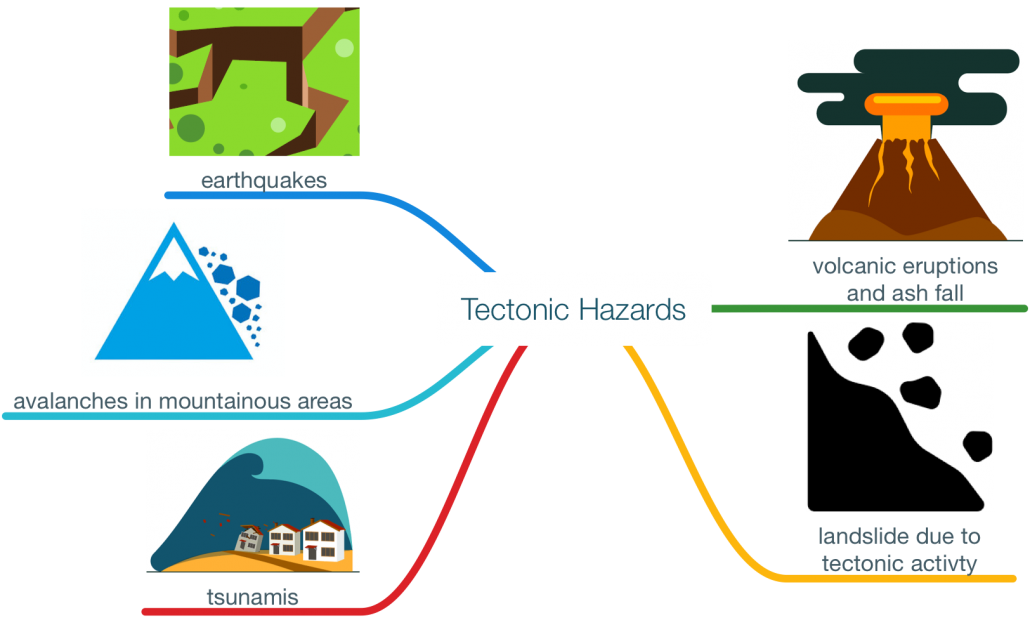What is a natural hazard?
A natural hazard is a natural event (for example, flood, volcanic eruption, earthquake, or tropical storm) that threatens people or has the potential to cause damage and destruction.
What are the different types of natural hazards?
Natural hazards are most commonly classified by the physical processes that cause them.
Tectonic hazards are created through the movement of the Earth’s tectonic plates.

Tectonic hazards
Hazards to humans created in the atmosphere, such as tropical storms, droughts and tornadoes, are atmospheric hazards.
Hazards originating on or near the Earth’s surface, such as landslides, flooding and mudflows, are considered geomorphological hazards.
Hazards posed by living things, e.g. forest fires, are biological hazards.
What factors affect hazard risk?
Natural events like volcanic eruptions or earthquakes aren’t called natural hazards if they happen far away from where people live and their belongings. They’re only considered natural hazards if they happen close to people and their homes.
Hazard risk is just a way to talk about how likely it is that one of these dangerous natural events will happen.
Here’s what can make that risk go up or down:
- Urbanisation: If many people live in one place, the risk of natural hazards can increase.
- Development: High-income countries (HICs) can handle natural hazards better because they have more substantial buildings, better emergency plans, and more money to keep people safe and respond to hazards.
- Land Use: Cutting down trees (deforestation) or building more cities (urbanisation) can make natural hazards more likely.
- Climate Change: As the weather changes, natural disasters like droughts or storms might happen more often.
- Geographical Location: Some places are just more likely to have natural disasters. For example, countries around the Pacific Ring of Fire have more volcanic eruptions and earthquakes. And if the world keeps getting warmer, more storms will hit countries in tropical areas.
